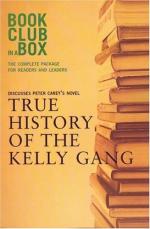|
This section contains 3,046 words (approx. 11 pages at 300 words per page) |

|
SOURCE: "Parallel Universes," in The New Republic, Vol. 212, No. 15, April 10, 1995, pp. 38-41.
In the review below, Heyward examines themes of cultural and national identity in The Unusual Life of Tristan Smith.
Peter Carey knows that the novelist's greatest freedom is the freedom to invent. He is an artificer, a fabulist whose work, with its gestures toward fantasy and science fiction, has always had the spectacular credibility and the irrevocable logic of dreams. When his short stories, with their hapless characters trapped in eerie, claustrophobic landscapes, began to appear in Australia in the 1970s, one thing was obvious: anything could happen in them. A man could become a truck. Aliens might invade and introduce a genetic lottery. People found their hands turning blue. Carey's imagery was vivid, surreal, scary. Australian fiction was never like this.
As Carey grew more confident, the short story became insufficient for his purposes. In...
|
This section contains 3,046 words (approx. 11 pages at 300 words per page) |

|


